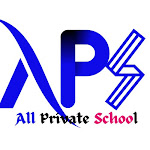CBSE Class VI Science. Chapter 8
BODY MOVEMENTS
NCERT Solutions for Class 6 Science
v Chapter 1: Food: Where Does IT Come from?
v Chapter 2: Components of Food
v Chapter 3: Fibre and Fabric
v Chapter 4: Sorting Materials into Groups
v Chapter 5: Separation of Substances
v Chapter 6: Changes around Us
v Chapter 8: Body Movement
v Chapter 9: The Living Organisms – Characteristics and Habits
v Chapter 10: Motions and Measurements of Distances
v Chapter 11: Lights, Shadows and Reflections
v Chapter 12: Electricity and Circuits
v Chapter 13: Fun and Magnets
v Chapter 14: Water
v Chapter 15: Air Around Us
v Chapter 16: Garbage in, Garbage Out
BODY MOVEMENTS
Keywords-
Backbone
|
Backbone is made up of 33 nos of small vertebrae extending from the skull to the pelvis
|
Ball and Socket Joint
|
In this joint, the rounded end of the one bone fits into the hollow space of other bone. This joint allows movement in all directions
|
Bristles
|
A short stiff hair, typically one of those on an animals skin, a man’s face
|
Cartilage
|
The parts of the Skeleton, which are not as hard as bones and are elastic in nature and can be bent.
|
Cavity
|
The hollow space in bones where another bone’s end can be joint.
|
Fixed Joint
|
The joints where we can’t move bones are called Fixed joints
|
Gait of animals
|
Animal’s manner of walking
|
Hinge Joints
|
The joint which allows movement only in one direction is called Hinge joint.
|
Muscle
|
The bundle of fibrous tissue in our body which has the ability to contract, producing movement of parts of the body
|
Outer skeleton
|
The body of cockroaches is covered with a hard outer skeleton. The outer skeleton is made up of a number of plates joined together and that permits movement
|
Pivotal joint
|
The pivotal joint allows movement in all planes. i. e. up and down, right and left.
|
Rib cage
|
The rib cage is like a box where important internal parts of our body lie protected inside this cage. In our chest rib bones joint with backbone together formed the rib cage.
|
Shoulder bones
|
The shoulder bone form by the collarbone and the shoulder blades. Shoulder bone connects the part of the chest and bones of the arm.
|
Skeleton
|
The framework of bones in our body is called Skeleton
|
Streamlined
|
The shape is tapered at both ends. That is, the head and tail of the body are smaller than the middle portion of the body. This body shape is called streamlined
|
Exercise
1. Fill in the blanks:
(a) Joints of the bones help in the ………………… of the body.
(b) A combination of bones and cartilages forms the ………… of the body.
(c) The bones at the elbow are joined by a …………………………… joint.
(d) The contraction of the …………………. Pulls the bones during movement.
Answer:
(a) movement
(b) skeleton
(c) hinge
(d) muscle
2. Indicate true (T) and false (F) among the following sentences.
(a) The movement and locomotion of all the animals are exactly the same. ( )
(b) The cartilages are harder than bones. ( )
(c) The finger bones do not have joints. ( )
(d) The forearm has two bones. ( )
(e) Cockroaches have an outer skeleton. ( )
Answer:
(a) False
(b) False
(c) False
(d) True
(e) True
3. Match the items in Column I with one or more items of column II.
Column I
Upper Jaw
Fish
Ribs
Snail
Cockroach
|
Column II
have fins on the body
has an outer skeleton
can fly-in the air
is an immovable joint
protect the heart
shows very slow movement
have a streamlined body
|
Ans:
Column I
|
Column II
is an immovable joint
have a streamlined body; have fins on the body
protect the heart
shows very slow movement
can fly-in the air; has an outer skeleton
|
4 Answer the following:
(a) What are a ball and socket joint?
Ans: The joint where the rounded end of one bone fits into the cavity i.e. hollow space of the other bone is called a ball and socket joint.
(b) Which of the skull bones is movable?
Ans: Lower Jaw
(c) Why can our elbow not move backward?
Ans: The elbow has a hinge joint that allows only a back and forth movement. That is, the hinge joint allows movement only in one direction. So, our elbow can not move backward.

